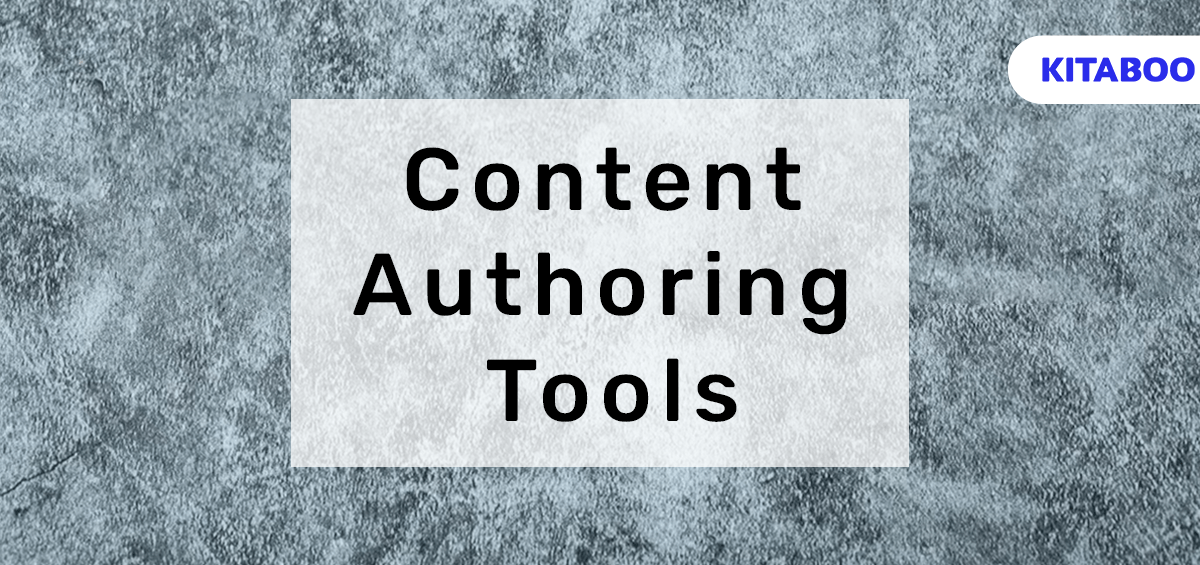Content authoring has become a pivotal aspect of modern teaching and learning. However, as educators and instructional designers strive to create engaging, effective, and accessible educational materials, the choice of tools becomes paramount.
Thus, if you are an eLearning professional seeking innovative ways to engage learners, this blog is tailored to provide great recommendations to enhance your content creation journey. In this blog, we will explore the best tools available for content authoring in education.
But first, let’s understand why we need content authoring tools in education.
Table of Contents
What is the Need for Content Authoring Tools in Education?
To remain competitive, leverage content authoring tools that streamline the process of creating, overseeing, and disseminating educational content. Here are some reasons why this technology can benefit organizations:
1. Customization for Diverse Learning Needs
Every student is unique, with individual learning preferences, abilities, and needs. Content authoring tools empower educators to tailor their materials to cater to this diversity. Whether it’s adjusting the pace of instruction, incorporating multimedia elements, or providing accessibility features for students with disabilities, these tools create personalized learning experiences that can significantly enhance comprehension and retention.
2. Interactive Learning Experiences
Passive learning has its limitations. To truly engage students and promote active learning, educators need tools that allow them to create interactive content. Content authoring tools offer the capability to embed quizzes, simulations, and multimedia elements, transforming static lessons into dynamic experiences that encourage participation and critical thinking.
3. Accessibility and Inclusivity
Inclusivity is a fundamental principle of modern education. Content authoring tools make it easier to create accessible content that students with disabilities can use. This ensures that education is truly inclusive, allowing all students equal access to learning materials regardless of their abilities.
4. Data-Driven Insights
Understanding student progress and areas of improvement is crucial for effective teaching. Content authoring tools often come equipped with analytics features that provide valuable insights into student performance. Educators can use this data to adapt their teaching strategies and optimize content to meet the needs of their students better.
5. Adaptation to Emerging Trends
The educational landscape is continually evolving, driven by technological advancements and changing pedagogical approaches. Content authoring tools allow educators to stay agile, enabling them to adapt to new trends and incorporate emerging technologies, such as virtual reality, augmented reality, or gamification, into their teaching materials.
Top 8 Content Authoring Tools in Education
When it comes to content authoring tools in education, the choices are abundant, each offering a unique set of features and capabilities to suit the diverse needs of educators. In this section, we’ll explore some of the top contenders in the field.
1. KITABOO Author
KITABOO Author stands out as a versatile and user-friendly content authoring tool designed specifically for educators. Its intuitive interface allows teachers to create interactive and engaging content without needing advanced technical skills. With features like multimedia integration, quizzes, and assessments, KITABOO Author empowers educators to craft immersive learning experiences that captivate students’ attention.
2. Articulate 360
Articulate 360 is a comprehensive suite of eLearning authoring tools that includes Storyline, Rise 360, and more. Storyline offers intricate control over course design and interactivity, while Rise 360 excels in creating responsive, mobile-friendly content. With a user-friendly interface and a vast community of users, Articulate 360 provides educators with a wide range of options for content creation and delivery.
3. iSpring
iSpring is known for its seamless integration with PowerPoint, making it a go-to choice for educators who want to leverage existing presentations. It enables educators to convert PowerPoint slides into interactive eLearning content effortlessly. With support for quizzes, assessments, and various multimedia formats, iSpring is an efficient tool for enhancing classroom materials.
4. Adobe Captivate
Adobe Captivate has long been a favorite among eLearning professionals for its robust multimedia capabilities. Educators can create captivating eLearning courses incorporating videos, simulations, and responsive design elements with this tool. Adobe Captivate’s extensive library of templates and assets simplifies the content creation process, making it an excellent choice for those who want to push the boundaries of interactive learning.
5. Elucidat
Designed with educators and eLearning professionals in mind, Elucidat offers a comprehensive solution for crafting dynamic and impactful learning experiences. With a user-friendly, drag-and-drop interface, educators and content creators can easily design and build interactive courses without requiring extensive coding or design skills.
It also offers an array of pre-designed templates and themes that expedite content creation. Lastly, it supports collaboration among team members and offers role-based permissions to streamline workflow and maintain content consistency.
6. Lectora
Lectora is renowned for its commitment to accessibility, ensuring all learners can access educational content. This tool allows educators to create highly interactive and engaging courses using a variety of templates and interactions. Lectora’s robust capabilities make it an excellent choice for educators seeking to make their content inclusive and engaging.
7. Camtasia
Camtasia is a versatile tool for educators who want to create video-based content. It excels in screen recording and video editing, making it ideal for creating instructional videos, tutorials, and demonstrations. Camtasia’s timeline-based interface offers precise control over video and audio elements.
8. Edmodo
Edmodo is a unique platform that combines content authoring with a learning management system. Educators can create and share content directly within the Edmodo environment, making it convenient for both teachers and students. This tool encourages collaboration and communication within the learning community.
Also Read: eBook Features
Final Thoughts
These are just a few of the many content authoring tools available in the educational landscape. Each tool brings its strengths to the table, catering to different teaching styles and preferences. When selecting the right tool for your academic needs, consider factors such as ease of use, compatibility with your existing systems, and the level of interactivity you wish to incorporate into your content.
Discover the innovative world of KITABOO Author and unlock a universe of possibilities for engaging and interactive learning materials. Request a demo today to know how KITABOO Author can empower you to create captivating educational content like never before!
Suggested Reads:
Discover How An Ebook Conversion, Publishing & Distribution Platform Can Help You
Kitaboo is a cloud-based content platform to create-publish & securely distribute interactive mobile-ready ebooks.
You May Also Like








